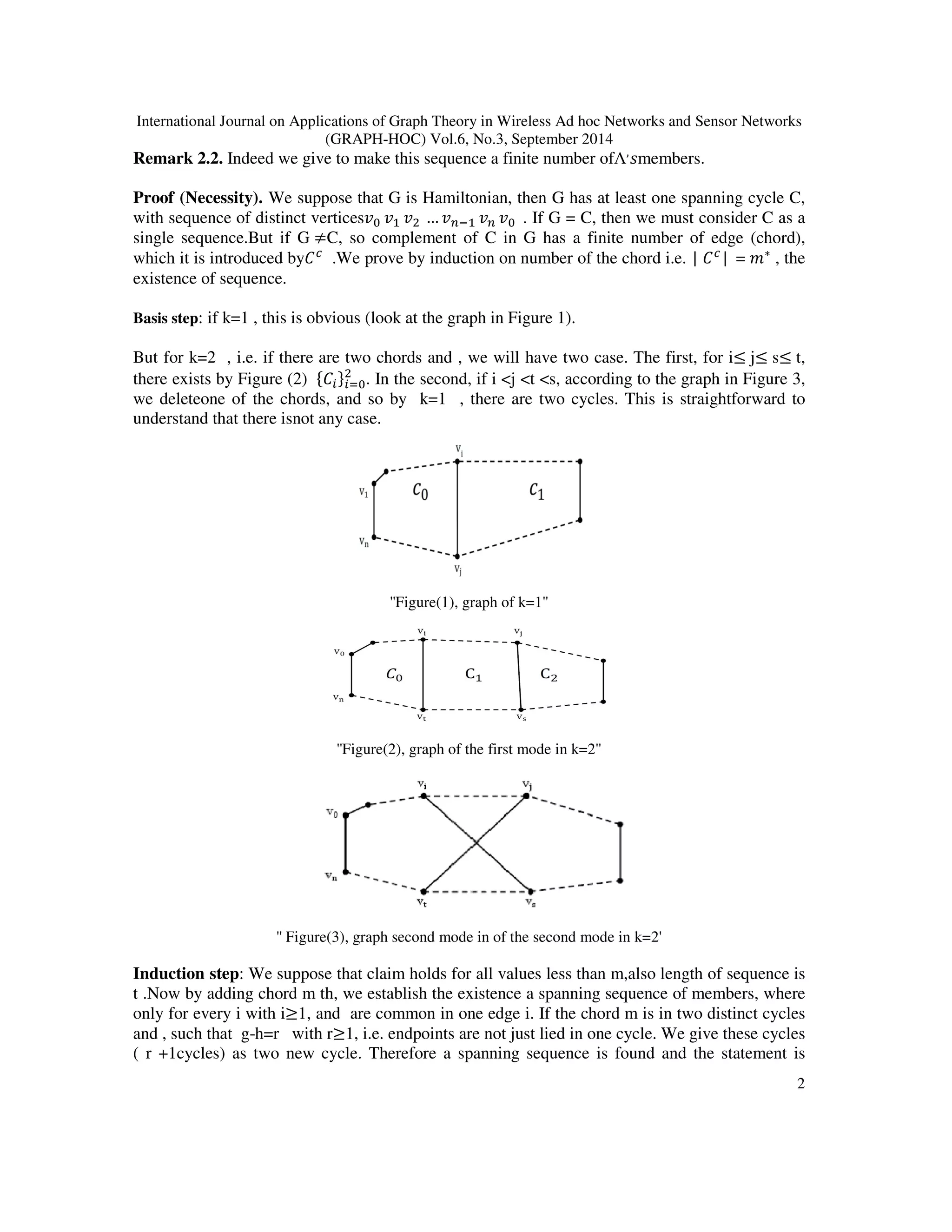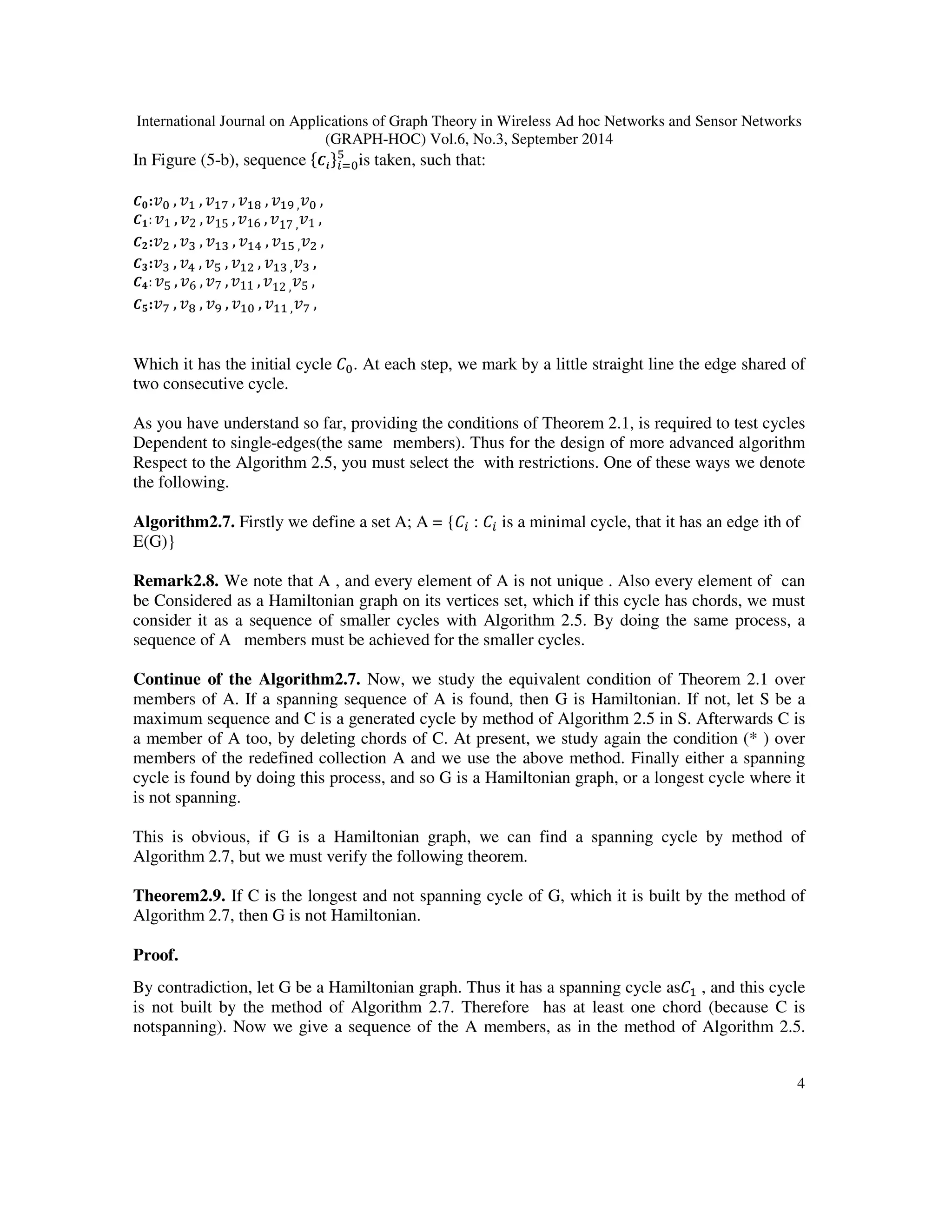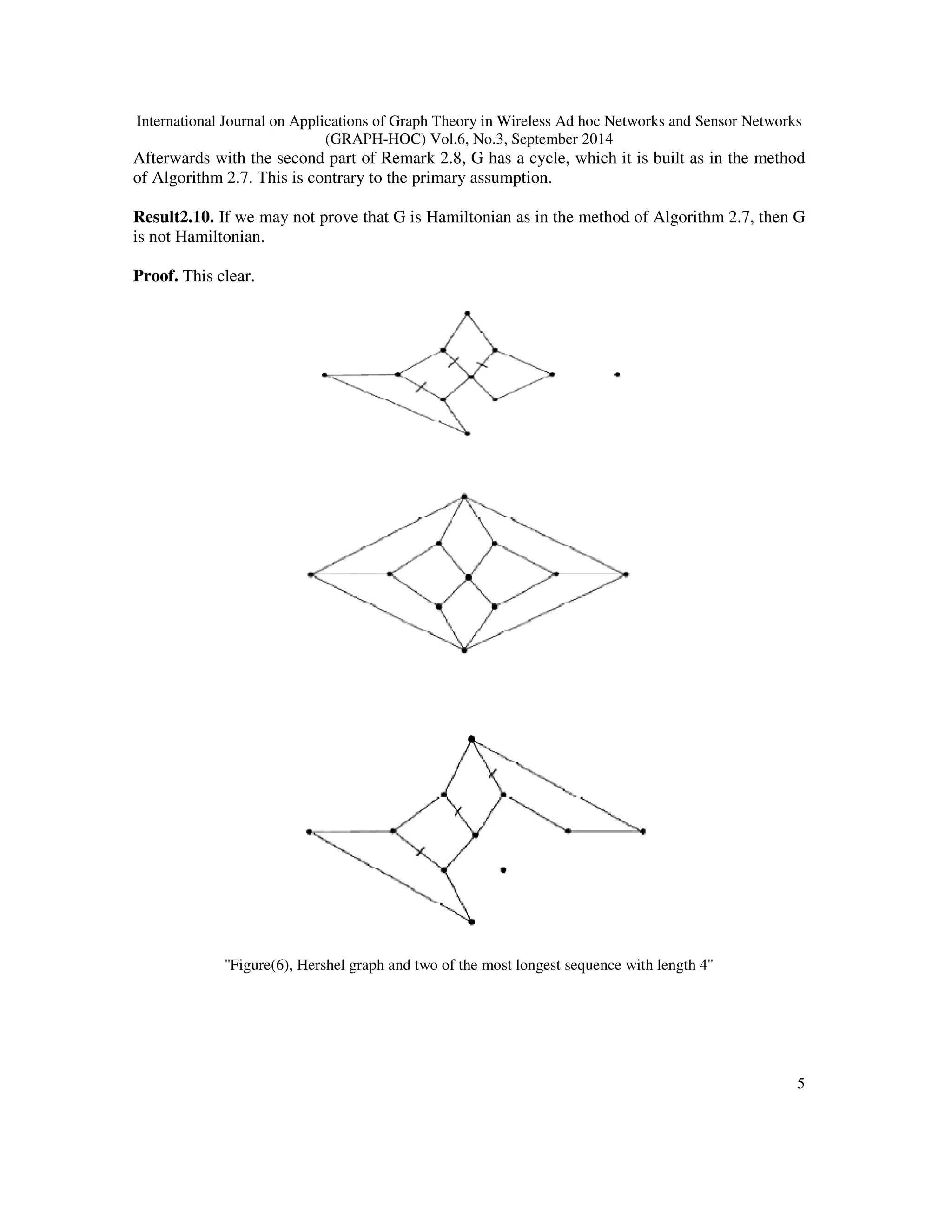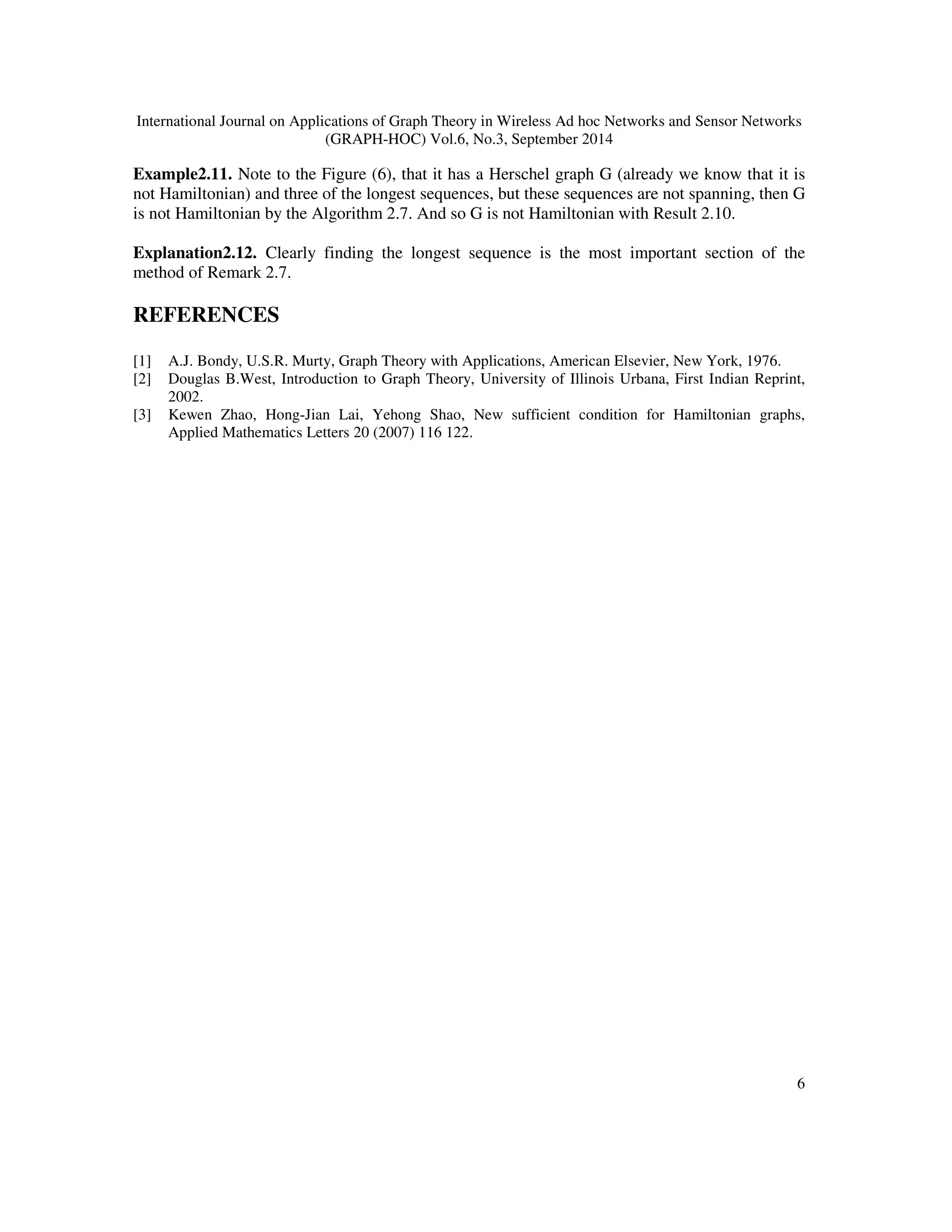This paper presents a necessary and sufficient condition for identifying Hamiltonian graphs, along with two algorithms for their evaluation. The main theorem states that a graph is Hamiltonian if it possesses a specific finite sequence of edge-induced spanning subgraphs. The document also discusses the method for constructing these sequences and includes examples to illustrate the concepts.
![International Journal on Applications of Graph Theory in Wireless Ad hoc Networks and Sensor Networks (GRAPH-HOC) Vol.6, No.3, September 2014 EQUIVALENT CONDITION AND TWO ALGORITHMS FOR HAMILTONIAN GRAPHS A.Z.Abdian, , Hosseinhatami, F.Shahamiri Department of mathematics, college of science Lorestanuniversity, Lorestan, Iran ABSTRACT: In this paper we present a necessary and sufficient condition for Hamiltonian graphs and also twoalgorithms and two examples in another part. KEYWORDS: Hamiltonian Graph; Finite Sequence; Algorithm, Spanning graph, Edge Induced, Chord. 1. INTRODUCTION We consider finite and simple graphs in this paper; undefined notations and terminology can be found in[1]. A Hamiltonian graph is a graph with a spanning cycle, also called a Hamiltonian cycle [2]. We note thatthe spanning cycle is not unique. Now suppose that E' is a nonempty subset of E. The sub graph of G where vertex set is the set of ends of edges in E' and whose edge set is E' is called the sub graph of G induced by E'and is denoted by G[E']; G[E'] is an edge-induced sub graph of G[1] . A chord of a cycle C is an edgenot in Cwhere endpoints put in G[2]. = { : is a cycle, such that it has an edge it ofE(G)}. We note that including the edge i th is not unique. In this paper we suppose that , then G has a cycle at least.Let be cycles, if and](https://image.slidesharecdn.com/equivalentconditionandtwoalgorithmsforhamiltoniangraphs-141008025151-conversion-gate01/75/Equivalent-condition-and-two-algorithms-for-hamiltonian-graphs-1-2048.jpg)

![a sequence of cycles.Also spanning sequence S is a sequence of cycles, which V[G]=V[S]. If and are cycles of graph G such that V( ) V() then we say that Extends . So C is a minimal cycle, if there is not a cycle , where C extends . 2. MAIN RESULTS Theorem 2.1. If G is a graph of order n, then G is Hamiltonian if and only if G satisfies in the following condition (* ); (* ) There is a finite sequence of members, where this sequence is an edge-induced and spanning Sub graph (with initial cycle ), and only for every i that i 1,](https://image.slidesharecdn.com/equivalentconditionandtwoalgorithmsforhamiltoniangraphs-141008025151-conversion-gate01/75/Equivalent-condition-and-two-algorithms-for-hamiltonian-graphs-3-2048.jpg)


